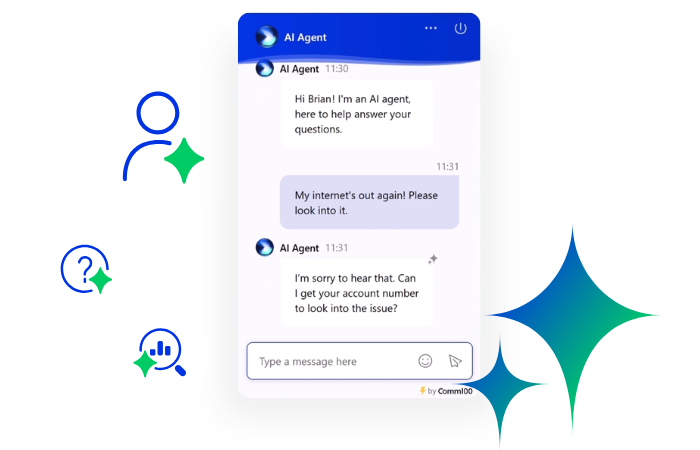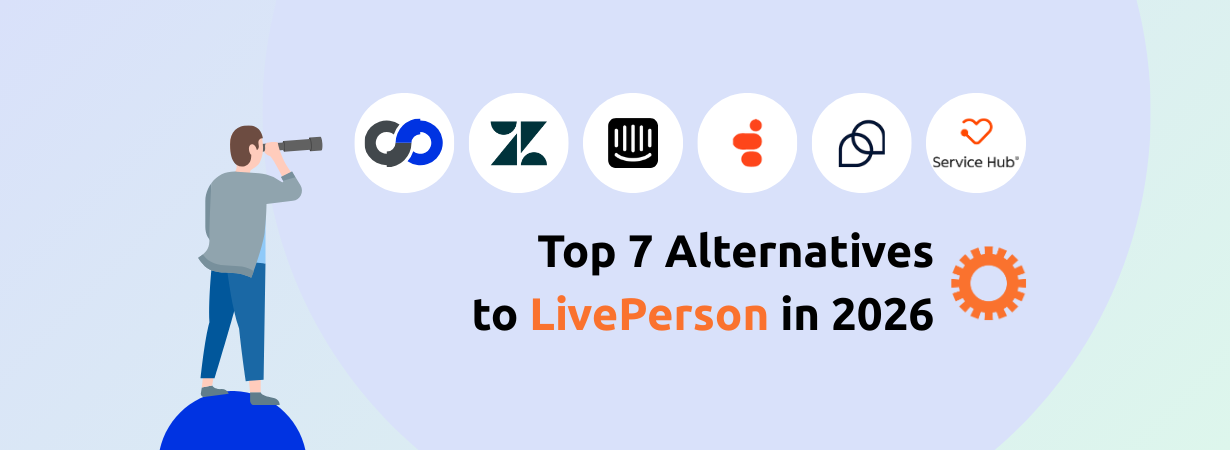Picture this: A screen with four applications open, arranged in windowed tiles so you can still access the other five other applications hidden behind. The click-clack sound of keyboard toggle shortcuts punctuating conversations between each back and forth. A chorus of “Hold, please” to buy time needed to manually copy and paste the customer information that was just provided via the IVR maze.
Sound familiar?
Contact centers are no stranger to system siloes with 45% citing lack of integrated systems as an obstacle to digital transformation and seamless customer experiences. While not a new phenomenon, new technologies are emerging that are working towards a remedy for this age-old problem – and unified communications just may be the answer your contact center is looking for.
- More seamless customer experiences
- Better agent efficiency
- Less risk of data breaches
- Work anywhere, anytime
- Reduced operational costs
- Quicker and better employee onboarding
- Simplified IT Maintenance
What does Unified Communications mean?
Unified communications is when all your external and internal communications are brought together on a single platform. Simple right?
When one platform connects all the dots within your business, you get a single source of truth for your agents. From phone calls to tickets and social to SMS, unified communications bring together all your customer service channels into one, 360-degree view. Your agents can access customer information, history, and profiles no matter which channel they choose to interact with you through.
Unified communications is powered by a system specifically tailored to contact centre needs – even warranting its own software category (Unified Communications as a Service, or UCaaS). These systems not only bring everything into one platform but also streamline the process of channel pivoting. For example, a customer may call in by phone but with a single click, an agent switches them into live chat screen sharing to troubleshoot a more technical issue.
What are the benefits of Unified Communications?
Streamlining processes and integrating systems help contact centers in a variety of contexts. Unified communications bring big business benefits to your contact center by improving agent productivity, efficiency, and agility.
- More seamless customer experiences: It’s a well-known fact that more and more customers will choose who they do business with based on customer experience over price. Customer experience is now a key competitive differentiator and 77% of companies believe unified communications will help them stand out from the crowd. Ensuring agents have access to customer information and support when they need it most means a better, more seamless and consistent experience for your customers.
- Better agent efficiency: When agents don’t need to keep 8 applications open and constantly switch between them just to do their job, they feel more efficient and productive – especially when they don’t have to juggle multiple logins or search for information scattered across different systems. Although internal and external communication have different audiences, keeping messages consistent across both can increase efficiency. The information flowing on the internal side of an organization should involve the messages being sent to external audiences. This gives agents a solid understanding of the content and keeps external messages consistent for all customers.
- Less risk of data breaches: When switching between systems, it’s all too easy for distracted agents to accidentally look up records that don’t belong to the customer they’re speaking to, bringing the risk of giving out sensitive information belonging to a different customer. I’ve seen far too many data breaches that have occurred this way. Using unified communication platforms, this risk disappears.
- Work anywhere, anytime: With the rise of work and remote contact centres, unified communication platforms have become the backbone of a modern, digital workforce. These platforms give remote workers the ability to work anywhere without harming agent performance.
- Reduced operational costs: Contact centres cut costs by reducing the number of applications and licenses they’re paying for, not to mention the reduction of maintenance costs and other IT resources spent on systems. Hardware savings are another factor, as your agents might not even need two screens. Paying for one unified communications platform is normally far more cost-effective than paying for multiple individual systems and the integrations needed to connect them.
- Quicker and better employee onboarding: Unified communications helps scale your team, process, and even internal training. With one single source of truth, your new hires or seasonal workers can find everything they need to learn and get ramped up. When it does come time to onboard agents, you only need to add users and set permissions for one platform rather than needing to distribute a sheet with 9 different logins in your welcome package.
- Simplified IT Maintenance: Bringing all your systems into one platform cuts the IT resources needed to maintain and manage your contact centre technology. Bringing one system in line with usability policies as well as security and compliance regulations also becomes much easier.
Imagine having your internal communication platform, CRM, and customer facing support channels at your fingertips, all the time on one screen. With unified communications, your agents can finally stop toggling and start working.
Download now: Customer Service Industry Trends 2024
Download this guide for free to learn more about these top customer service industry trends.
Download Now
Report







